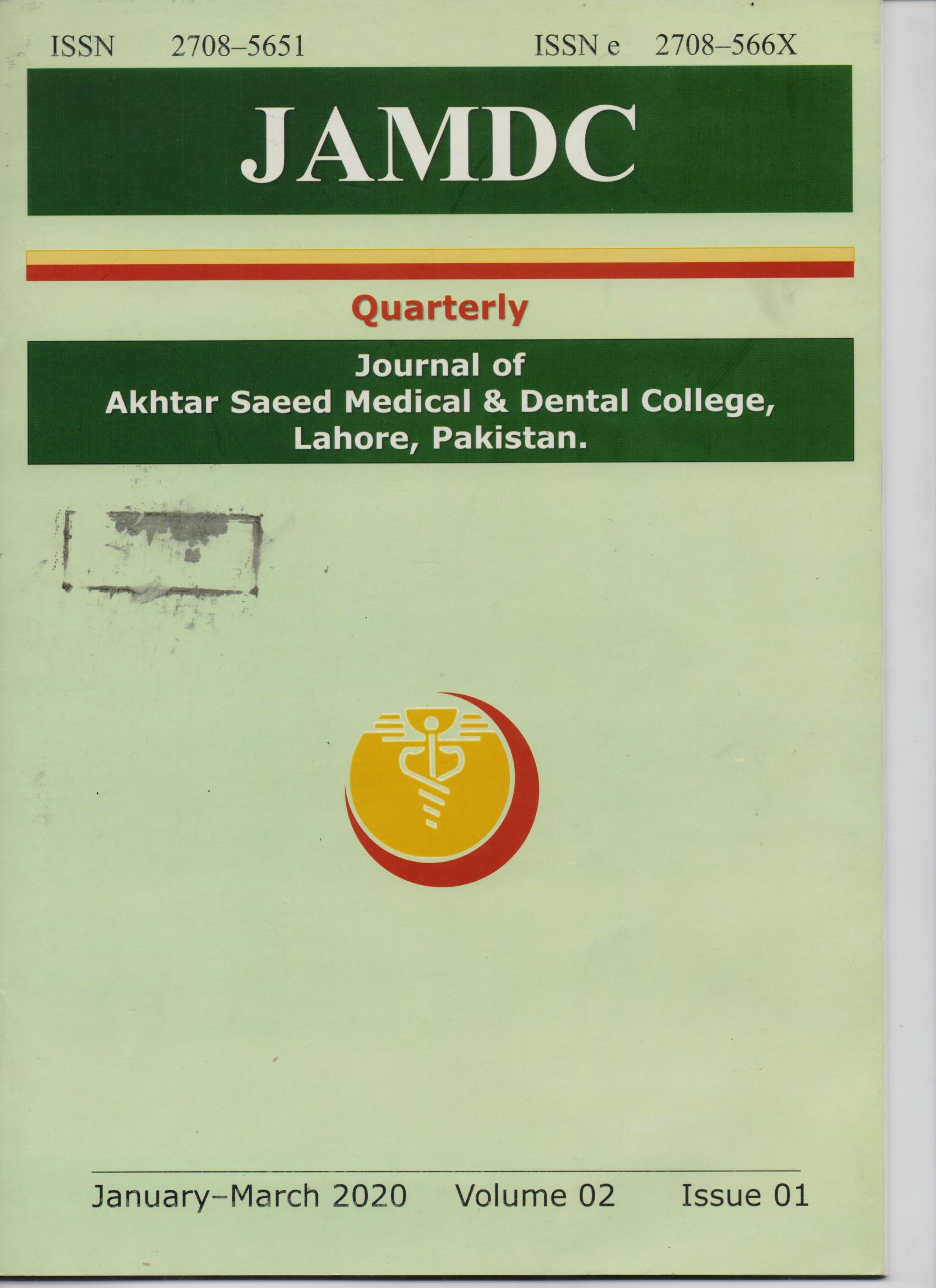Original Articles FREQUENCY AND ASSOCIATED RISK FACTORS OF URINARY INCONTINENCE AND IT’S IMPACT ON LIFE OF WOMEN.
Keywords:
Urinary Incontinence, BMI, ParityAbstract
Objective:
The study was conducted to determine the frequency of urinary incontinence, its types, associated risk factors, and its impact on the life of women.
Material and Methods:
This cross-sectional study was conducted in the gynaecological out patient department (OPD) of Akhtar Saeed Trust Teaching Hospital from July 2018 to December 2018. The patients of age 18 or more who complained of involuntary loss of urine were selected from gynae OPD, and after informed consent, they were further questioned about the problem according to the questionnaire. The data was analyzed on SPSS version 17.
Results:
Out of 1425 patients, 210 patients answered yes to the complaint of urinary incontinence. 198 patients who agreed to participate were interviewed according to the questionnaire. The overall frequency of incontinence was 13.8 % (198). Stress incontinence was the most common type of incontinence found in 127 patients (64.1%), urge incontinence was seen in 37 patients (18.7%), and mixed incontinence was present in 34 patients (17.2%). Urinary incontinence was found to be markedly high in women above 40 years of age (69.7%). One hundred seventy-nine patients (90.4%) belonged to poor socioeconomic status, 17 patients were from the middle class, and two patients (1%) belong to upper socioeconomic status. Incontinence especially stress incontinence, was associated with increasing parity as 81 patients (40.9%) were grand multipara making it a significant risk factor for urinary incontinence. Other risk factors were vaginal delivery (85.4%), increased BMI that is > 25 per kg/m2 (47%), constipation (51%), history of prolapse (34.8%), and chronic respiratory disease (10%). Urinary incontinence was seen more in postmenopausal women (48%) and in those having a habit of tobacco/tea coffee intake (60.5%). Urinary incontinence greatly affected women's quality of life as 71 patients (35.9%) avoided going out of the house due to this problem, 38 patients (19.2%) had reduced sexual relationships, and 23 patients (11.6%) had to use sanitary towels.
Conclusion:
Urinary incontinence is a common health issue which is usually under-reported though it greatly affects the quality of life of women, especially above 40 years of age.
